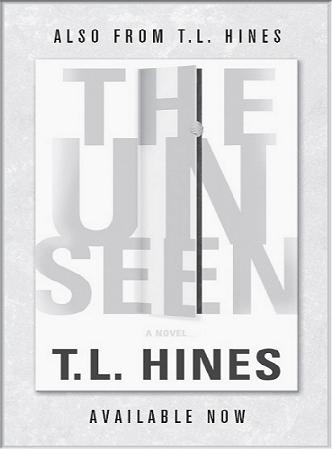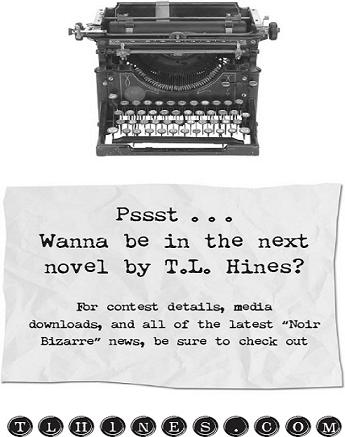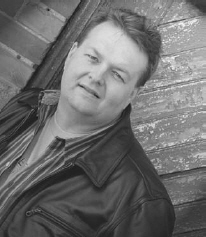Faces in the Fire (33 page)

Then he ran. Because he had to.
At last, lungs feeling as if they'd been dipped in rubbing alcohol, he stopped to catch his breath and thoughts. He stood on a gravel road leading away from a barren fieldâthe field where the fire had burnedâto a dark thicket of trees.
He didn't want to, but he turned to look at the destruction behind him before he disappeared into the trees and concentrated a few moments on the pillar of black smoke rising to the heavens above. In the distance, the sound of alarms pierced the air around him.
He had no idea what had happenedâhad no idea, in fact, who he was or why he was hereâbut he knew, as he took in the scene of carnage, that it was important to keep moving forward. Like a shark. (Or a catfish?)
He felt a lump in his pocket and retrieved the items held there. A driver's license with his photo, from the state of New Jersey. Kurt Marlowe. The familiarity of the name struck him immediately. Yes, that had to be him. The license was wrapped in a sheet of paper indicating acceptance to a truck driving school in California.
He folded the paper back around the driver's license, slipped both into his pocket again, took one last look at the burning inferno, and turned to walk down the gravel path.
Behind him lay death and destruction, yes, but ahead of him, down this lonely gravel road, lay everything else.
And he would not look back again.
Special thanks to God, for helping me see the opportunities in every challenge; to my Lovely Wife and Lovely Daughter, for continuing to be lovely when I'm lost in schemes to torture characters in new and interesting ways; to Allen Arnold, Amanda Bostic, and the team at Thomas Nelson for planting the seeds that became the stories in this book; to editors Ed Stackler and LB Norton for helping those seeds take root and grow; to Lee Hough for his constant guidance (yeah, I had to give up that seed metaphor before it went too far); to Todd Michael Greene, for lending his name to Kurt's therapist; and to you, dear reader, for lending me a few hours of your time.
Words fueled by the music of Adele; Broken Social Scene; Fountains of Wayne; David Crowder Band; Peter Bjorn & John; Robbie Seay Band; Better Than Ezra; Clodhopper; Starfield; Sweet; Pixies; Future of Forestry; and Wilco; among many others.
1. Why do you think the book is called
Faces in the Fire
? What are the “faces” the title references? What are the “fires”?
2.
Faces in the Fire
is told through a series of seemingly disjointed scenes that take place out of order. Why do you think the author chose this narrative technique? Did it add anything to the stories for you? Did it detract from the stories?
3. Scientists have described the human brain's tendency to identify patterns in seemingly unrelated data as “patternicity.” In other words, we see faces in clouds, identify coded messages in long texts, and detect conspiracies tying together coincidences. Each of the main characters in
Faces in the Fire
exhibits patternicity by reading meaning into the number 1595544534âand yet, their paths are changed by their unique interpretations. Do you think their paths would have led to the same place if they hadn't come into contact with the numbers? Why or why not? Are there seemingly random events that have changed the course of your own life? Â
4. In the first story, Kurt seems haunted by anguished voices trapped inside articles of clothing. Despite this, Kurt actually seeks out new articles of clothing, searching for more voices. Why do you think Kurt seems paradoxically driven to look for something that he wants to hide from himself?
5. Corrine, the main character in the second story, says she's proud to be a “bottom feeder.” Judging by her behavior, would you agree that she's comfortable thinking of herself as a bottom feeder?
6. In the third story, when Grace's tattoos begin to offer her glimpses into the lives of her clients, she doesn't seem terrified; instead, she seems to gain a sense of purpose, and even begins to kick her heroin habit. Why do you think this is? What does it say about Grace as a character?
Â
7. Stan, the main character in the final story, is fixated on the image of a catfish from his childhood. What do you think the catfish represents for him?
Â
8. How are the main characters in each of the stories alike? How are they different? Do they change or grow as they interact with each other?
Â
9. Do you think the paths of these characters may cross again at some point in the future? Why or why not?
10. If you asked each of the main characters at the beginning of their stories what they most want in life, what would their answers be? Would their answers be different at the end of their stories?
Â



T.L. Hines writes “Noir Bizarre” stories, mixing mysteries with oddities in books such as
The Unseen, Waking Lazarus,
and
The Dead Whisper On
.
Waking Lazarus
received Library Journal's “25 Best Genre Fiction Books of the Year” award.